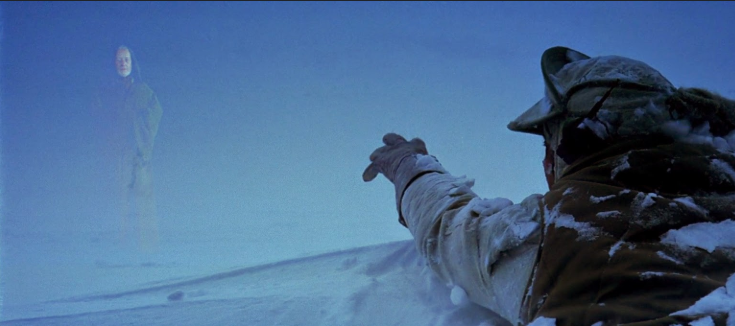In D&D and other games, I’ve found that having a character die can be deflating, especially if it’s near the end of a campaign. I’ve discussed a ‘Taken Out’ rule variant with my Thursday group (which we’ve adopted for my Redmark campaign), but I’ll list some other house rules for dealing with Character Death. Let me know what you think. I’ll probably use one of these variants for any future games and campaigns I run.
1. Instant Death
This is rules-as-written in most games. Once you mechanically die, your character is dead (unless magically resurrected), and this happens instantly. Note that this can be deflating or awkward if it happens early in a game session and the player doesn’t have a new character ready to play.
2. Mortal Wound
Once you mechanically die, your character is marked for death and you’ll cross the threshold soon. The GM will tell you when. Generally your character will stabilize and become conscious but with a mortal wound that cannot be healed. The GM may allow you to play your character until the end of that game session or whenever your GM determines makes the best narrative sense, with no chance of resurrection.
3. Taken Out
When you’re character mechanically dies, the GM give the player a choice: your character can die (your GM will tell you when), or they can be Taken Out. Taken Out means you give the GM temporary extra narrative control over the scene which supersedes other rules. The character doesn’t die but is knocked unconscious and dragged off by monsters, mind-controlled by a mesmerist and flees as an ally of their new master, incapacitated by disease and powerless to move without healing, or other similar outcome. The surviving ally characters cannot intervene to prevent this from happened; it simply happens, and with the character off-scene, the surviving characters have a new quest: to save or heal the affected character. Note that being taken out doesn’t mean there is no consequence. The character may lost their possessions and return forever changed by their experience.
4. Last Breath
When you’re dying you take your Last Breath. You catch a glimpse of the afterlife or the celestial world that awaits (the GM will describe it). Then roll 2d6 (just roll, no modifiers).
On a 10 or higher, you’ve cheated death — you’re in a bad spot but you’re still alive and stabilized.
On a 7–9, a celestial power will offer you a bargain. Take the pact and stabilize or refuse and pass into the realm of Death. The bargain will usually be a quest that will come at great cost, often changing your character’s personality and goals.
On 6 or lower, your fate is sealed. You’re marked for death and you’ll cross the threshold soon. The GM will tell you when. Generally your character will stabilize and become conscious but with a mortal wound that cannot be healed. The GM may allow you to play your character until the end of that game session or whenever your GM determines makes the best narrative sense.
The Last Breath is that moment standing between life and death. Time stands still and the dying character glimpses the afterlife. This could be anything from a Force Ghost, a guardian angel, or Death himself. Even those who do not pass beyond into eternity catch a glimpse of the other side and what might await them — friends and enemies past, rewards or punishment for acts in life or other, stranger vistas. All are changed in some way by this moment—even those who escape.
The key thing to remember is that a brush with death, succeed or fail, is a significant moment that should always lead to change.
(Above text was inspired by Dungeon World. Note that this allows you to play out the scene where Luke has a force vision when dying on Hoth, or Thorin is dying and having a monologue after the Battle of Five Armies in The Hobbit.)
5. Heroes Never Die
Best used in games with Superpowers or in a campaign of high pulp, with this rule, characters who die don’t actually die but instead are unconscious and stabilized, and will regain consciousness after the current scene.




Recent Comments